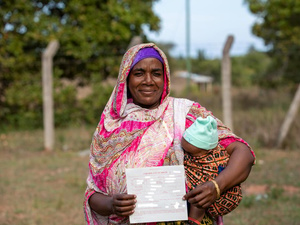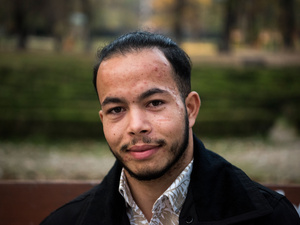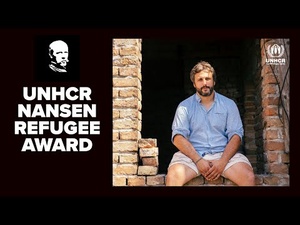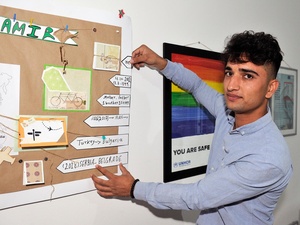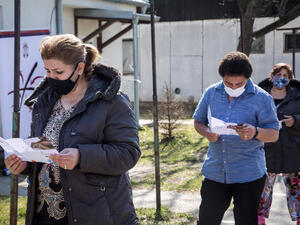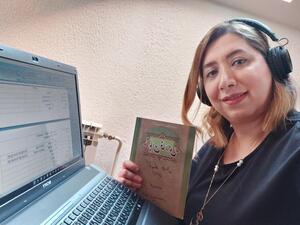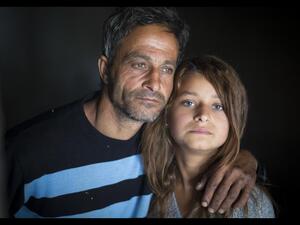Kosovo Crisis Update
Kosovo Crisis Update
Kosovo
On its third full day in Kosovo, UNHCR is stepping up a multi-agency relief effort in Kosovo with assessment teams and aid convoys moving to two places. The convoys today went to Urosevac and Prizren. On Thursday a convoy will bring aid not only to Kosovars but also to the Yugoslav Red Cross for the displaced Serbs in the provincial capital, Pristina.
Thousands of refugees began "voting with their feet" in a spontaneous movement back to Kosovo on Tuesday, despite information from UNHCR and KFOR that it may not be safe for them to return yet, since the Yugoslav army withdrawal will only be completed at midnight on June 20.
Wednesday morning, UNHCR organized impromptu consultations between AFOR, KFOR, the KLA and the Albanian authorities to set up some traffic control, as the road between the Morini border crossing and Kukes town became completely blocked by two-way traffic on the one-lane road.
Way stations are being set up along the route between the Morini border crossing in northern Albania and Prizren, 18 kilometres to the east, to provide medical help and water for returnees who might need assistance. NGO staff are patrolling the road with tow-ropes to move any vehicles which have broken down out of the way.
Following an initial visit on Tuesday, UNHCR is reopening an office today in Prizren, which used to be a regional centre for UNHCR's aid distribution in south-western Kosovo. Three trucks - two UNHCR and one WFP - are proceeding there today with food and water. UNICEF also is heading there with mine awareness material. Catholic Relief Services has set up shop in Prizren already as well.
Similar "pit stops," which will have food and water, medical teams and mechanics to help those having problems with cars and tractor-trailers, are being planned to help returnees travelling along the 60-kilometre highway between the Macedonian border town of Blace and Pristina.
During a visit on Tuesday, UNHCR located a warehouse in Urosevac, 30 kilometres south of Pristina, and a food convoy is expected to proceed there today. UNHCR will open a satellite office in Urosevac - the second of seven planned in Kosovo - as soon as space is found. An estimated 8,000 displaced people were located in Urosevac and they told UNHCR that up to 20,000 displaced people were in the surrounding 15 villages. Many refugees in the FYR of Macedonia originate from Urosevac.
Albania
Thousands of refugees massed at the Morini crossing early today, hoping to return to Kosovo. Tuesday, around 5,000 refugees crossed Morini, heading for Prizren in their own or hired vehicles.
With the opening of the border, the traffic has been two-way, with family members also coming from Prizren to pick up their relatives in Kukes in northern Albania. There have been emotional family reunions in the camps in Kukes.
This morning, UNHCR staff at Morini report that thousands of refugees are backed up on the road to the border. UNHCR is taking down basic data of the refugees as they cross the border. By noontime already around 3,700 refugees had crossed back into Kosovo.
With the help of NGO partners, UNHCR has set up a medical post and water supply at the border. UNHCR also is setting up two emergency posts on the road to Prizren for those in need of assistance, about two kilometres and seven kilometres from the border.
UNHCR staff were travelling the road to get an idea of northward flow of refugees. Through Monday, about 2,000 refugees had come back to Kukes from southern and central Albania.
FYR of Macedonia
At least 2,800 refugees returned to Kosovo on Tuesday from the FYR of Macedonia through the main crossing at Blace. Most of these people had been staying in host families and had their own vehicles. Returnees were mostly men, but among them were also elderly and women.
UNHCR staff went up and down the line, passing out mine awareness information. UNHCR had urged refugees not to rush into Kosovo until the Yugoslav withdrawal and KFOR deployment was completed.
Early on Tuesday, a man and an elderly woman were killed in a land mine explosion on the Kosovo side near Blace as they crossed illegally in a field near the official border post. The woman's husband was slightly injured. They apparently wanted to avoid giving up their "green card" - the FYR of Macedonia registration paper for refugees living outside the camps - and decided to avoid the official crossing point.
UNHCR had been appealing to the Skopje authorities not to take away the green cards upon exit and by Tuesday evening, they agreed to this request. Departing refugees can now retain their cards, on which an exit stamp will be placed.
Meanwhile, UNHCR is working to ensure that all refugees in camps in FYR of Macedonia have up-to-date registration documents. Around 10,000 people in Neprosteno and Bojane camps were re-registered Tuesday and received ID papers. Today, about 20,000 refugees in Stenkovec 1 (Brazda) are to join the exercise.
Republic of Montenegro
A total of 638 Serbian civilians from Kosovo entered Montenegro on Tuesday, bringing the overall Serb arrivals from the province to around 17,500 since 9 June. About half of the number are proceeding to Serbia and the rest are staying in host families in Montenegro and are being assisted by the Macedonian Red Cross.
UNHCR-IOM Humanitarian Evacuation Programme
A total of 664 refugees in the FYR of Macedonia departed on Tuesday under the UNHCR-IOM humanitarian evacuation programme. The overall count is now 86,067. Destinations were Germany, Switzerland, Turkey and the United Kingdom.


